Chevrolet Cobalt Review
The word "cobalt" comes from 'kobolt', variant of the old German word 'kobold', meaning 'goblin.' As the story goes, German silver miners of yore believed that goblins would come and steal their booty, leaving worthless cobalt in its place. Not exactly an auspicious choice of names for a car, then.
Still, one can hardly fault the General for wanting to distance the Cobalt from the Cavalier it replaces. What with everyone from Toyota to Hyundai producing far more interesting econoboxes than the august Cavalier, Chevrolet knew that the Cobalt had to set a new, higher standard for its low end products. It had to 'bring the noise' to capture sales from parties other than Alamo and Enterprise.
Enter the noise, or, as the ads say, Chevy's 'new commotion.' From the outside, the Cobalt's design is as novel as a snowflake in Aspen. It isn't unattractive, mind, but it lacks any hint of the brash American flair that Chrysler is currently deploying in their successful campaign against the imports. At least the Cobalt Coupe's a tastier morsel than the Saturn Ion, with which it shares its mechanical underpinnings. The Chevy's aggressively raked roofline (almost 7/8ths Mustang in execution) and characterful dual-element tail lamps add a bit of interest to an otherwise uninspiring shape.
The Cobalt's interior reflects the General's ongoing campaign against acrid cheapness; the Cobalt's plastics rank several orders above the outgoing Cavaliers' (and the Ion). Still, the cabin's overall quality won't worry VW's Golfers or Toyota's Sciontologists. As always, the devil's in the details. For example, the Cobalt's seat bottoms ratchet up and down, but the action is uncultivated, and the seat coverings themselves are more Stainmaster than stylemeister. The Cobalt's urethane steering wheel rim is suitably thick, but feels like a discount replacement part, and fails to telescope.
On the plus side, the Cobalt is a seriously quiet automobile. Noise from the drivetrain, tires, wind and traffic are all suppressed far more effectively than they are in a comparable Honda Civic or Toyota Corolla. Better still, despite the frigid temperatures and epic potholes on our test loop, the Cobalt's interior trim uttered nary a squeak or groan. Reliability freaks have every reason to be hopeful.
Over the road con brio, the Cobalt proved largely free of unwanted 'commotion'. In situations where a Cavalier would've staggered about like the oenophiles in Sideways, the Cobalt remained firmly planted to the pavement. Enthusiasts could be forgiven for wanting to pass on anything employing a twist-beam trailing arm rear suspension, but the reality is something of a pleasant surprise. (Transitional responses are sharpened by standard anti-roll bars front and rear.) Admittedly, the Cobalt doesn't inspire the same handling confidence as the Ford Focus, but it doesn't slur about like the skinny-tired Mitsubishi Lancer, either.
The Cobalt's variable-assist electric power steering lacks true precision, especially at the straight-ahead, but it's not unbearably artificial or over-boosted. The Chevy's brakes are more effective than any disc/drum setup has a right to be (you'll have to plump for the SS if you want discs all 'round), providing tremendous stopping power with minimal fuss or fade. A little more braking feel would be welcome, but the stoppers' safety is beyond reproach.
Despite a large-for-the-class 2.2L Ecotec four-cylinder with 145 horses, the Cobalt is a decidedly reluctant revver, with general smoothness being notable by its absence. Although we can only hope that Chevrolet will find some people who will, thrashing an entry-level Cobalt is both unpleasant and pointless. Doubtlessly, the shortly-promised 2.4L 175hp will improve matters, as will the 205 ponies in the force-fed 2.0L SS variant. But for now, file the Cobalt's go-power under: 'Competent, not inspiring.'
And there you have it. The Cobalt, for all its improvements in quality and engineering, is yet another boring automobile. The 'new commotion' ultimately lacks what Chevy's admen so desperately want us to believe it has– something to get excited about. Sure, GM has come up with a perfectly competent car capable of going ply-to-ply with Honda and Toyota's current (albeit dated) offerings. But the Cobalt stumbles badly next to the dynamic soul of the Mazda3, and the abrasive charisma of the Dodge Neon SRT-4.
Given GM's sliding market share, the Cobalt's lack of ambition is particularly troubling. Name change or no, the Cobalt started from the back of the pack, inheriting the Cavalier's reputation for low residuals, suspect quality, and a 'rent me/beat me' persona. Whether through novel styling, breakthrough technology, scandalously low MSRP or stupid amounts of power, the Cobalt needed something to help it stand out from its ancestor AND a field crowded with viable alternatives. To stem the tide of imported low-cost, high quality sedans, the Cobalt had to be a game-changer. What GM delivered is a solid setup man. Back to the mines boys, back to the mines.
More by Admin
Latest Car Reviews
Read moreLatest Product Reviews
Read moreRecent Comments
- JMII No.
- Mike Beranek I would imagine that a Tesla high-rise condo building would spy on you, lock you inside during software updates, and drop panes of glass when the wind exceeds 4 mph.
- Theflyersfan It isn't just GM (Looking at Ford and Nissan as well) but will always question the wisdom of putting 1.0 to 2.0L high pressure turbos into a vehicle that can exceed 2 tons when loaded with American-sized Americans and the cargo one hauls around. I know the automakers don't care - the warranty has long ended by the time the turbo goes Chernobyl, but doesn't look good for loyalty if engines keep frying.
- Dartdude The global climate scam is a money and power grab. If you follow the money it will lead you to Demo contributors or global elitists. The government needs to go back to their original purpose and get out of the public sector.
- FreedMike Miami is a trip - it's probably the closest thing we have to Dubai in this country. If you are into Lambos and the like, definitely go - you'll see a show every night. These condos fit right in with the luxury-brand culture - I'm surprised there isn't a Louis Vuitton or Gucci building. I was in Miami Beach in January with my fiancee, and we shared a lovely lunch that consisted of three street tacos each, chips and salsa, and two sodas. Tab: $70.00, with tip. Great town, assuming you can afford to live there.

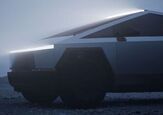
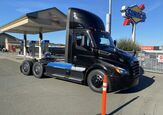
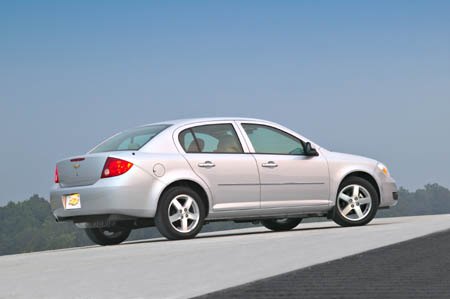















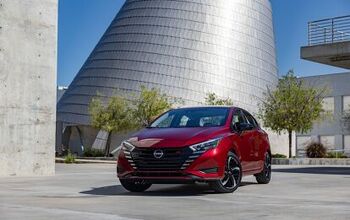

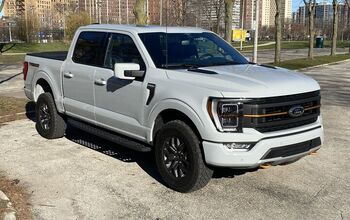
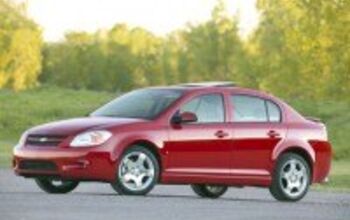
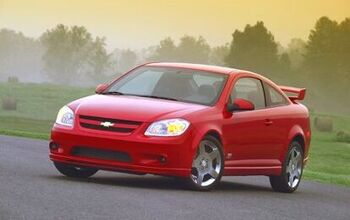
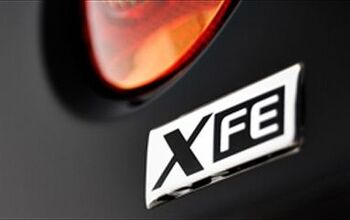
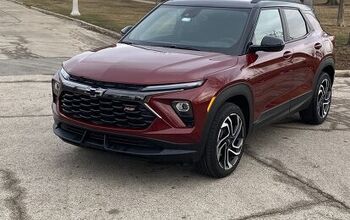
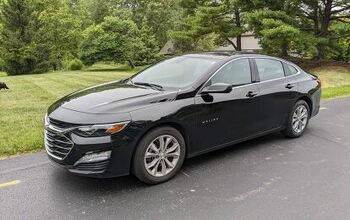


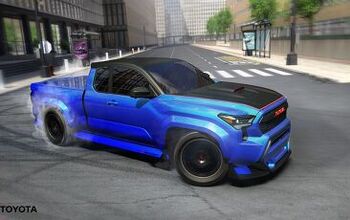
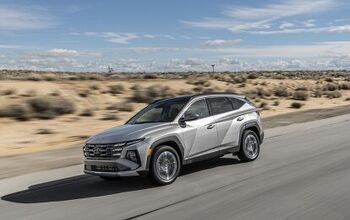
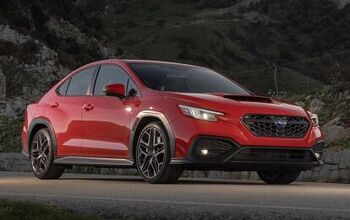
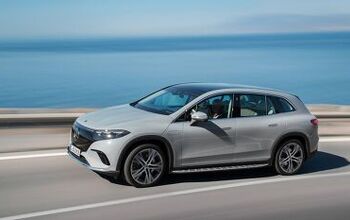
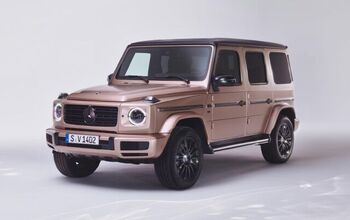
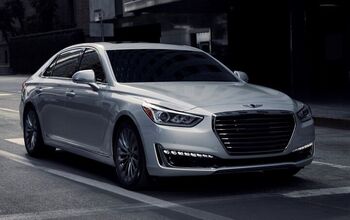
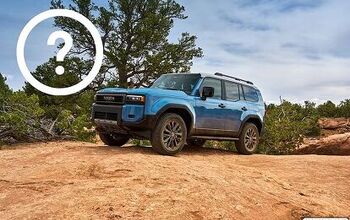
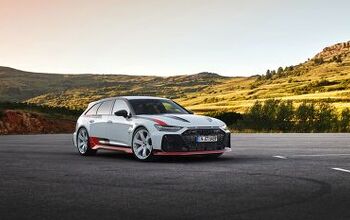
Comments
Join the conversation
Just rented a two-door. The best thing I can say is I got 31 mpg in mixed driving. Other than that, I really wasn't too impressed. No temp gauge, sits low, hard to see out of, small trunk opening, long heavy doors, hard plastic interior, hard-to-reach seatbelts, weak heater. I really wished I had requested the Versa I had last month.
I spent a lot of time driving the stick shift cobalt and auto trans G5 yesterday. THe auto trans did me no favors but the stick shift Cobalt presumably drives like a stick shift G5, so here's what I think. The price of these cars is remarkably low in the base version only. I was offered my choice of either one for less than $12,000 plus tax. THat includes freight. It's about 30% less than a Civic LX. You get power windows and doors and spoiler on the base G5. Not on the Cobalt, which is a few dollars less. The G5 does have some rather odd looking faux carbon fibre, but it has nice upholstry. I thought the stick shift was quite entertaining and the radio with FX sounded pretty good. I thought the suspension was definately better than the Civic EX I drove for a while, too. THe Cobalt calls it's suspension "soft-ride". The G% calls its "HIV 1 touring" or something like that. I think the G5 has a slightly shorter axle gear, so that's the excitement. What I don't understand is how dramatically the price increases if you get any options on either of these cars. It moves quickly up to $20,000 by the time you get cruise control because you can't get cruise control without first getting everything else. Are you sure GM really wants to stay in business? They still think they're going to con you by luring you into the showroom with a $13,000 car and then selling you up to a $20,000 when they explaine that the $13,000 car doesn't include cruise control. THey think you're that stupid. It really defeats the purpose to get anything above base model, at all. As it is, on the Chevy, you're rolling your own and fiddling with the mirrors all the time. Point, Pontiac. I have an old Malibu with 150,000 miles. It drives like a new car (a new Chevy car) and better than several Hondas and Toyotas with similar miles that I've tested. It has more solid steering and front end than my old Lexus LS400 with 140,000 mi. I think the GM cars are reliable, just noisy, under damped and poorly designed visually. And I don't understand "high effort feel" power steering, at all. I'd prefer the one finger steering of the 1959 Lincoln Continental, any day. But I had a lot of fun for a new car that's less than $12,000 and I think the author of this review writes better than she evaluates cars rationally. But she probably drove the automatic, which spoils everything. It can't be that quick if it ain't got a stick.